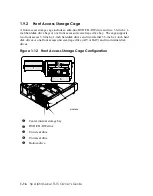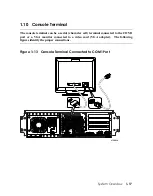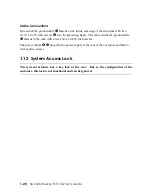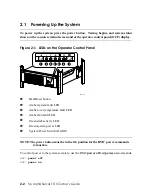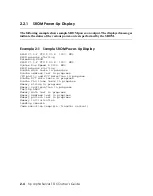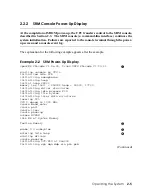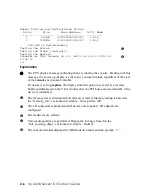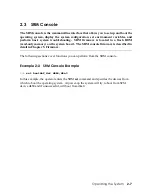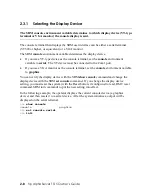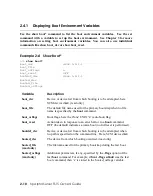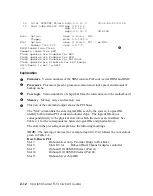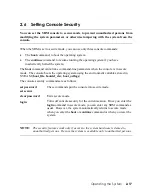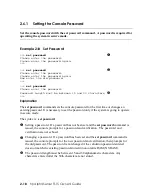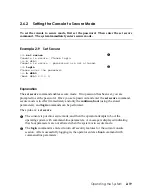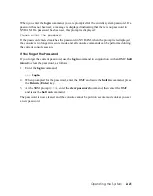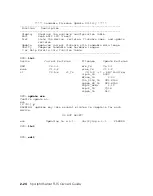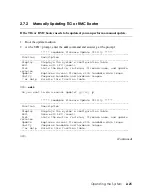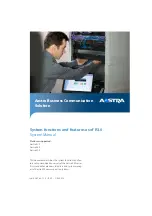
2.4.1
Displaying Boot Environment Variables
Use the show boot* command to list the boot environment variables. Use the set
command with a variable to set up the boot environment. See Chapter 3 for more
information on setting boot environment variables. You can also use individual
commands like show boot_dev or show boot_reset.
Example 2–4 Show Boot*
>>>
show boot*
boot_dev
dka0.0.0.1.1
boot_file
boot_osflags
a
boot_reset
OFF
bootdef_dev
dka0.0.0.1.1
booted_dev
booted_file
booted_osflags
Variable Description
boot_dev
Device or device list from which booting is to be attempted, here
SCSI device dka0. (read only)
boot_file
The default file name used for the primary bootstrap when no file
name is specified by the
boot
command.
boot_osflags
Boot flags, here the
Tru64 UNIX
“a” (autoboot) flag.
boot_reset
Action taken in response to an error halt or to a
boot
command.
OFF (the default) indicates a warm boot (no full reset is performed).
bootdef_dev
Device or device list from which booting is to be attempted when
no path is specified on the command line. Here, SCSI device dka0.
booted_dev
The device from which booting occurred. (read only)
booted_file
(read only)
The file name used for the primary bootstrap during the last boot.
booted_osflags
(read only)
Additional parameters, if any, specified by the -
flags
option of the
last
boot
command. For example, if
boot -flags s dka0
was the last
boot command, then ‘s’ is stored in the booted_osflags variable.
2-10
hp AlphaServer TS15 Owner's Guide

